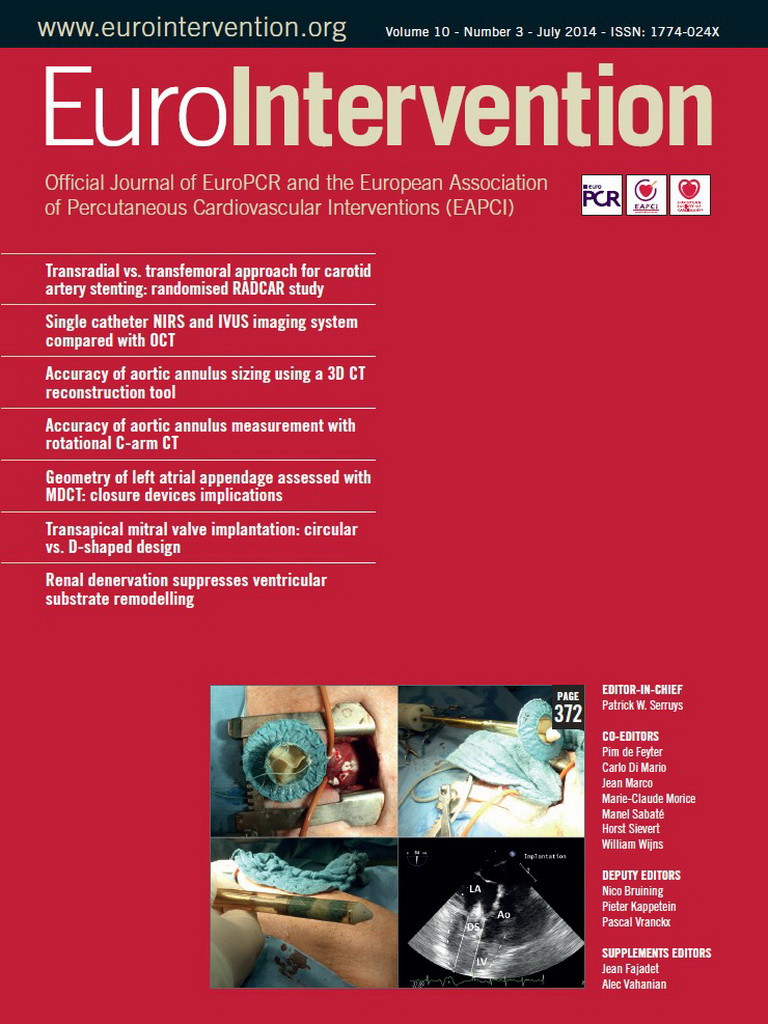We recently had the pleasure of publishing in the European Heart Journal - Cardiovascular Imaging a paper concerning the use of multislice computed tomography (MSCT) for interventional cardiologists1. In this issue of EuroIntervention, we are publishing a series of papers dealing specifically with the use of non-invasive imaging for sizing the aortic annulus as well as imaging for the left atrial appendage (LAA) in order to judge the devices that could be best employed to close the appendage.
It is remarkable today that in the fields of coronary and structural heart interventions the impact of non-invasive assessment by MSCT scan has grown so quickly and has become such an important element in the field of pre-intervention assessment. Currently, the FDA requires that European and American pivotal trials assess the aortic annulus by MSCT and, taking advantage of the electronic platforms available, proceed with electronic screening of the patient by the multinational, multicentre screening committees who are part of the “virtual” Heart Team.
Of course physicians have different possibilities to assess the aortic annulus. In this edition of our journal, two papers discuss the accuracy of aortic annulus measurements for the evaluation of transcatheter aortic valve replacement, reflecting the attempt by imaging experts and interventionalists to obtain the most precise measurement of the aortic annulus to pinpoint the calibre of the device to be used2,3. Similarly, for LAA, thanks to 3D images with high spatial resolution, MSCT provides accurate measurements so that complicated procedures can be avoided or at least anticipated in advance4.
To what extent pre-intervention MSCT is a must and how superior it really is to echographic assessment, whether transthoracic or transoesophageal, remains a matter of debate. This was nicely illustrated by the entertaining discussion between Carlos Ruiz and Horst Sievert at EuroPCR 2014. Carlos stated that the MSCT assessment was a prerequisite for LAA implantation, while Horst noted that, though he has still not used MSCT assessment, his results were similar to those of his colleagues who do.
We believe strongly that serious progress has been made in the quantitative assessment of the aortic annulus. The local collaboration between the radiologist and interventionalist is probably the sine qua non condition to promote this type of pre-procedure assessment. It should be noted, however, that reluctance on the part of some interventionalists to use this technique may, in fact, reflect the local policy of their respective hospitals.
Will this trial change my practice?
As clinicians, we are constantly exposed to trials which present new evidence that might have an impact on our practice. With this in mind, we are publishing in this edition of EuroIntervention, a novel series of reports capturing a new session format at EuroPCR. These sessions attempt to link trials to our daily practice by bringing together experienced practitioners in the field and expert academics together with experts in trial design itself for an informed and lively discussion. During an interactive exchange with the audience, the trial in question is assessed with a view to its practical relevance. “Will this trial change my practice?”

